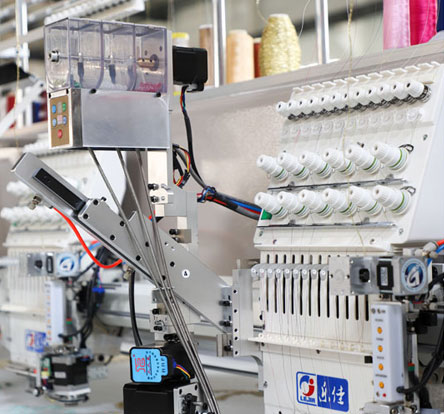Summary:After you make a good version and embroider it with an embroidery machine, you may often find that the effect is not sat...
After you make a good version and embroider it with an embroidery machine, you may often find that the effect is not satisfactory. There are always many differences from the original version, but when you open the embroidery version you made with the embroidery software and compare it, you will see that it is a computer The picture above is exactly the same as the original one. You may be confused as to what went wrong?
How to improve embroidery quality in embroidery pattern makingFirst of all, you have to consider the fabric and shape that need to be embroidered. If it is deformed, you should consider using shrinkage compensation to embroider the shape correctly, or the fabric needs to be stabilized with understitch embroidery stitches. Use automatic bottom stitching, shrinkage compensation, short stitch steps, fine-tuning values, and smart corners to achieve smooth and even placement of stitches and eliminate gaps in pattern design. Let me explain in detail below.
Use automatic bottom sewingEmbroider the lower stitches before the filling stitches to stabilize the fabric or prevent the embroidery thread from sinking into the fabric. The best type of bottom seam depends on the size of the fabric, shape, and type of filling stitch used. Larger areas and elastic fabrics such as knitted fabrics and embossed fabrics require lower seams than smaller areas and harder fabrics such as twill or leather.
Use shrinkage compensationThe stitch pulls the fabric inward (shrinks in the direction of the embroidery needle) where the embroidery needle passes through the fabric. This may cause the fabric to wrinkle, and at the same time there will be gaps in the fabric. Automatic shrinkage compensation is the “excessive embroidery” of the contour line of the needle-filled shape on both sides of the embroidery needle passing through the fabric, so the automatic shrinkage compensation can offset this undesirable result of wrinkles and gaps.
An experienced pattern maker can also overlap the objects during plate making (that is, make the border a little larger when stroked), and use manual methods to compensate for shrinkage.
Minimize the uplift of stitches in curves or cornersYou can also use fine-tuning values or short stitch steps to reduce stitch bumps. A sharp outer edge will cause the stitch to bulge along the inner edge. When embroidering this shape, it will cause the embroidery thread to break. The longer the stitches, the more serious the problem.
Use fine-tuning values for the shape of the curve to make the stitch density uniform along the outer and inner edges. Use short stitch steps on the curved object to reduce the stitch density on the inside of the curved object.
 Reduce the bulge of stitches at sharp corners
Reduce the bulge of stitches at sharp cornersThe sharp corners in the shape bulge the stitches and stitch points, which will form a hard part on the fabric, and may also damage the fabric or break the embroidery needle. Using smart corners can help you control sharp corners in the input method A and input method C objects. There are two types: beveled seam corners and hat-shaped corners.
Adjust stitch densityUse the stitch processor to adjust the stitch density when zooming or not. When using different fabrics or embroidery threads, or in order to reduce production costs, this will make you reduce the number of stitches in the embroidery version.
Split or keep or keep long stitchesSometimes the stitches are too long. You can use the automatic split stitch to divide the long stitches into shorter stitches, and randomly distribute the stitch points so that they do not form obvious lines in the shape or are easy to embroider Disconnected.
By dividing long stitches into a series of skip stitches with automatic skip stitches, you can maintain long stitches in the object. If the stitches exceed the maximum frame movement distance and automatic stitch skipping is not selected, the stitches will be broken down into smaller stitches. This will affect the appearance of embroidery products, especially when filling needles with flat needles.


